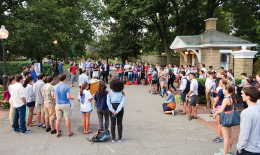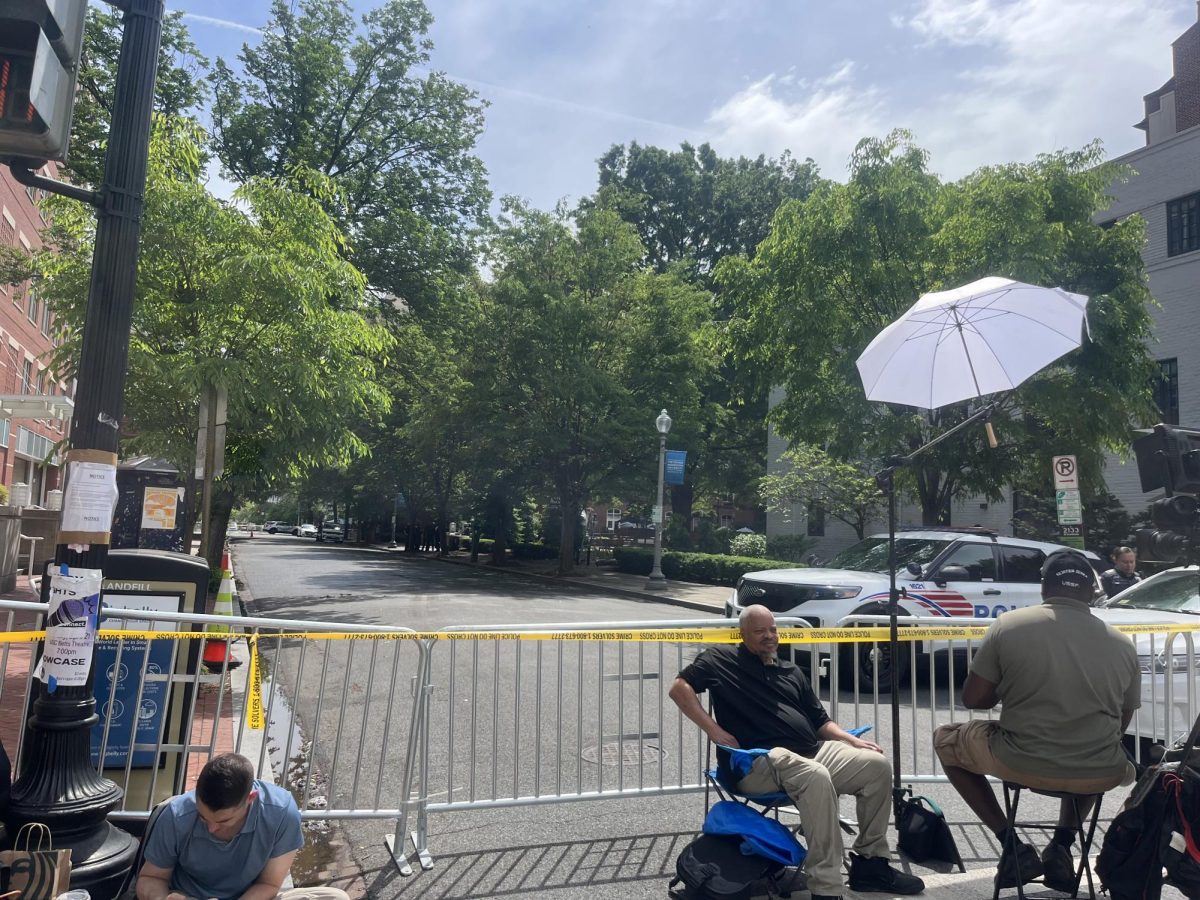
Administrators clarified Monday morning that the satellite residence is just one option under consideration to help meet the 2010 Campus Plan commitment to provide housing for an additional 385 students by fall 2015. Yet leaders of the “One Georgetown, One Campus” campaign said it was important to voice student opposition as soon as possible.
“The wide response from students I’ve talked to has been that this satellite campus is flat-out unacceptable,” Georgetown University Student Association Chief of Staff Zach Singer (SFS ’15) said at a press conference to announce the launch of the campaign Monday evening. “We can’t wait for the university to come to a decision and be told, ‘This is what we’re doing.’”
Though the campaign is not technically a GUSA initiative, it is being spearheaded by Singer and GUSA President Nate Tisa (SFS ’14).
Details of the satellite residence option, which emerged in a series of private forums with student leaders held last week, are still fuzzy. The university is considering leasing sites as far as the Clarendon and Court House metrorail stations in Virginia, as well as locations north of campus on Wisconsin Avenue and near Capitol Hill. Potential sites would be judged based on the availability of high-quality housing and Metro accessibility, and could house anywhere from 100 to 385 students. Details on the locations under review are expected later this month.
Administrators objected to students’ characterization of the tentative proposal as potentially divisive for the student body.
“Even if most students don’t like the option, to be blunt and crass about it, most students don’t need to live there,” Vice President for Student Affairs Todd Olson said. “If there is a subset of students who say ‘under the following conditions this would be kind of interesting,’ then it might make sense to pursue as an option.”
“My concern is that some of the information out there could be counter-productive,” added Associate Vice President for Community Engagement and Strategic Initiatives Lauralyn Lee, emphasizing that the university is still in the early stages of figuring out how to meet its legal obligation to provide extra housing.
Administrators added that they had always planned on organizing public discussions about the housing options being considered, even though the focus group sessions held last week were all private. Vice President for Planning and Facilities Management Robin Morey cited lessons learned from campus backlash to a lack of input on the original Northeast Triangle Residence Hall proposal in July.
Tisa said the Northeast Triangle, originally set to be completed across from Reiss Science Building for fall 2015, may be delayed. Olson did not confirm this but acknowledged that there are many challenges to building on campus.
“We know that this is a complex city in which to build buildings, and we’re doing our very best,” Olson said.
Despite these setbacks in Georgetown’s efforts to meet the requirements of the campus plan agreement, Tisa, Singer and other campus leaders who spoke at Monday’s press conference said they considered the option of satellite housing unacceptable under any circumstances. Students of Georgetown Inc. CEO Lizzy MacGill (COL ’14) emphasized the impact that the dorm would have on students’ ability to engage in extracurricular activities, while College Academic Council Vice President Parnia Zahedi (COL ’15) argued that it would limit opportunities for after-hours intellectual dialogue.
“This satellite campus will divide Georgetown in two,” Tisa said. “It puts our shared identity at stake.”

Tisa said the decision to promote the referendum via petition rather than through a senate vote will demonstrate that opposition to the satellite residence is a cross-campus phenomenon.
“There are so many student leaders who are passionate about this that we didn’t want to pigeonhole it by labeling it as GUSA,” he said. “Those groups can reach out to students much better than we can.”
Referencing the fact that the “One Georgetown, One Campus” Facebook page had received more than 400 likes in the 24 hours since it was created Sunday, he added, “I love GUSA, but I don’t think we could get that many Facebook likes overnight.”
He and Singer hope that the referendum will demonstrate student opposition to the idea and force the university to remove it from consideration. University spokeswoman Stacy Kerr emphasized that Georgetown was not considering a satellite campus — a term that has been used by the “One Georgetown, One Campus” campaign — similar to The George Washington University’s Mount Vernon campus. Kerr said that the satellite housing option would be strictly residential.
But Singer dismissed this distinction.
“It’s the ‘satellite’ word that’s the issue,” he said. “People are nervous about, is this truly going to be a living-learning community if you’re busing people in from 20 or 30 minutes out?”

Morey said that the university is also looking at additional construction on campus, mentioning Harbin patio, Kober-Cogan Building and the Georgetown University Hotel and Conference Center — a proposal that had been considered as part of the campus plan but was scrapped in July for financial and logistical reasons. Morey would not specify which of these were most likely.
When asked what options he would consider an acceptable alternative to the off-campus dorm, Tisa was also unable to offer specifics.
“There’s potential for renovation,” he said, before pivoting back to the satellite residence. “The problem is that [administrators] are not looking into the other options with the same vigor as they’re looking at the satellite campus … and that’s a Band-Aid solution.”
For now, Olson said that the satellite dorm option remains under consideration and will be discussed at an unspecified series of discussions with students in the coming weeks, even if a referendum is held on the issue.
“Certainly student feedback in that form would be taken very seriously,” he said, adding that majority opposition to the option would not necessarily remove it from the table.
Lee also urged students not to let the referendum to the satellite residence overshadow an opportunity to make clear what options they would consider acceptable.
“I’d challenge student leadership to think about whether [a referendum] is the most effective mechanism to have their voices heard right now,” Lee said. “I would hate to see all of the energy focused on what [students] don’t want and lose the opportunity to tell us what [they] do.”














